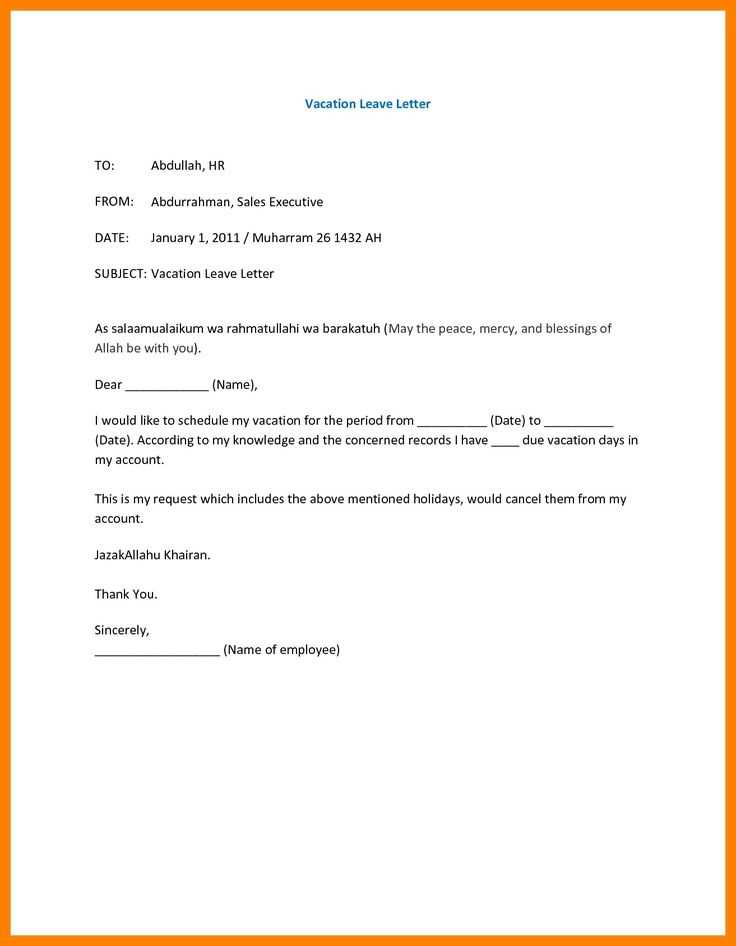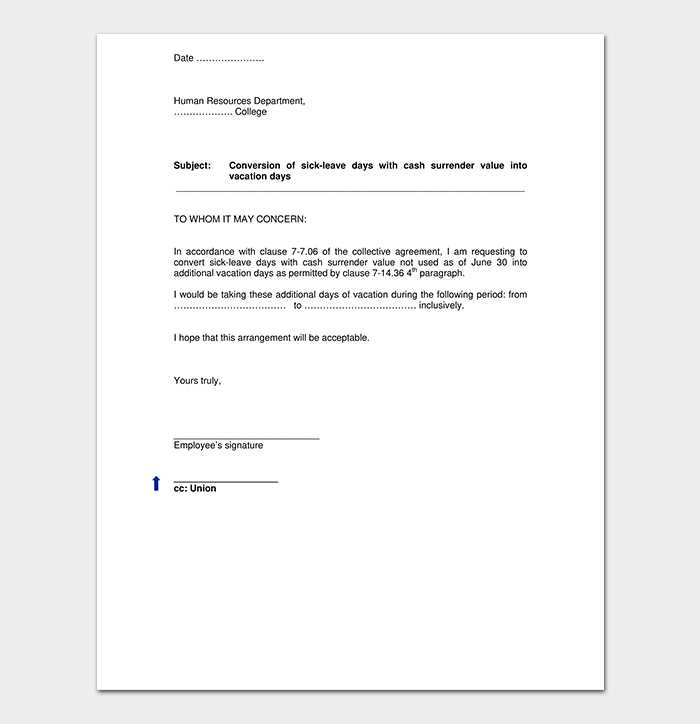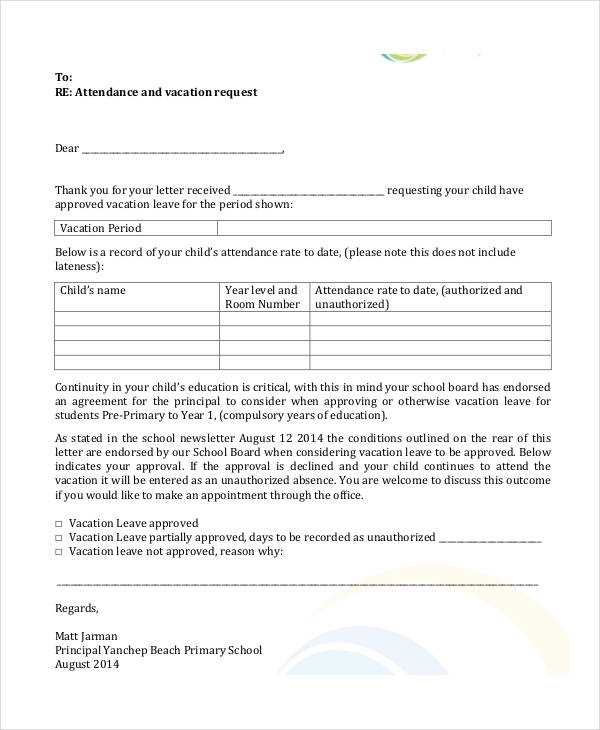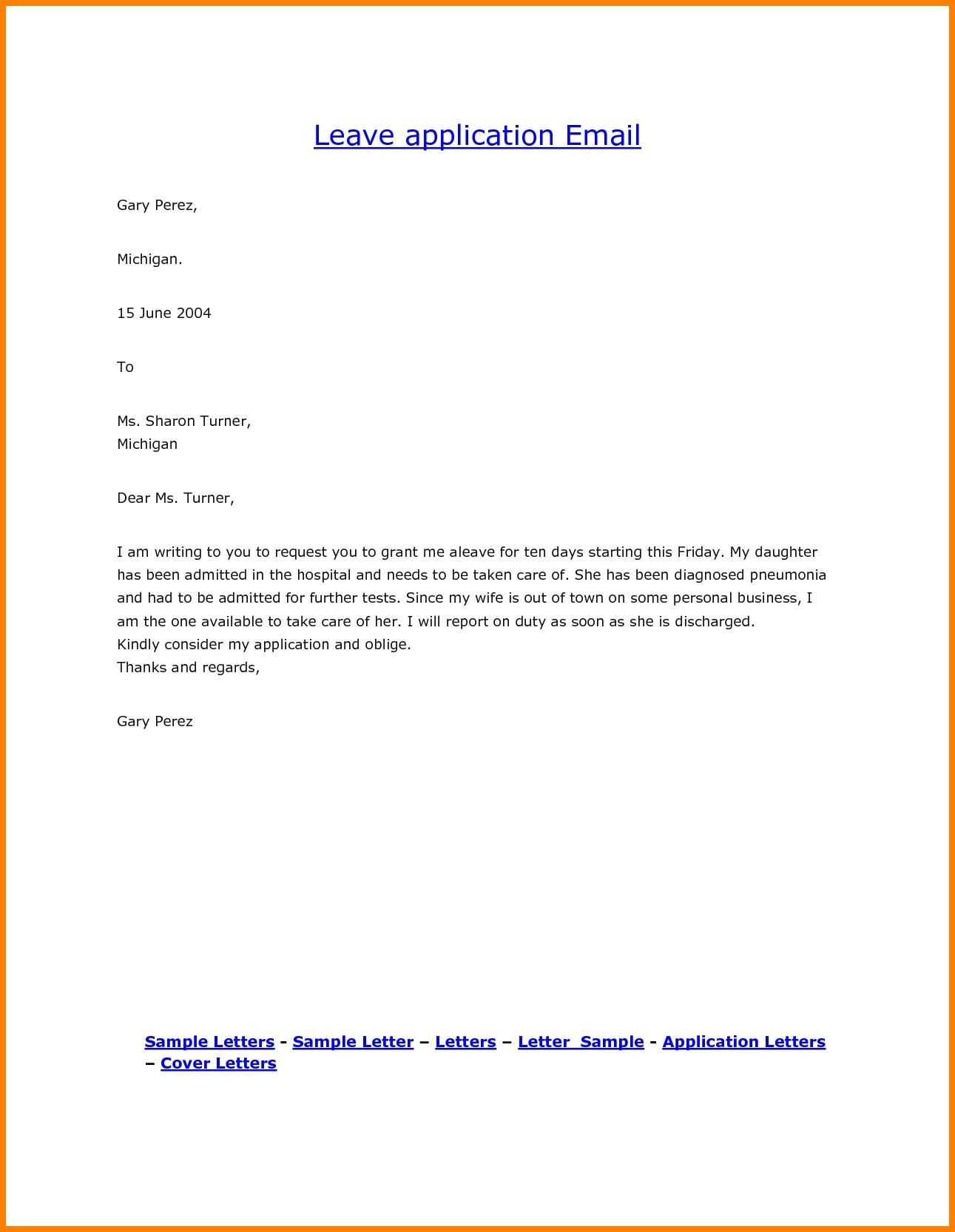Sabbatical Leave Letter Template for Your Time Off Request

When planning a long-term break from your professional responsibilities, it’s essential to communicate your intentions clearly and professionally. The process involves formally asking your employer for an extended period off, which may be for personal, academic, or career-related reasons. A well-written request helps ensure that both you and your employer are on the same page, making the transition smoother for all involved.
In this section, we’ll explore how to craft a formal document that expresses your desire to take time off in a respectful and organized manner. This document should be straightforward yet considerate, outlining your reasons and the timing of your absence. By focusing on clarity and professionalism, you can create an effective request that is likely to be well-received by your employer.
How to Write a Request for Extended Time Away
When requesting a prolonged break from your job, it’s important to clearly convey your intentions and maintain a professional tone. Crafting a well-structured message is key to ensuring your employer understands the reasons behind your request and the details of your absence. The approach should be direct yet respectful, demonstrating your commitment to both your responsibilities and your need for time away.
Start by addressing your employer formally, using a polite introduction that sets the tone for the rest of the communication. In the body of your message, clearly state the dates of your proposed absence and the reason for the request. Be concise but thorough, offering enough information to allow your employer to make an informed decision. Finally, close your message by expressing gratitude for their consideration and offering to discuss any further details if needed.
Key Components of a Request for Time Off
When drafting a formal request for an extended absence, it’s essential to include all the necessary details to ensure clarity and professionalism. A complete and well-organized request helps to avoid confusion and presents your intentions in a positive light.
The following elements should be included in your request:
- Introduction: Begin with a polite greeting and state the purpose of your communication.
- Dates of Absence: Clearly specify the start and end dates of your proposed time away. Make sure the timing is feasible and well thought out.
- Reason for Absence: Briefly explain the reason for your request. Whether it’s for personal, academic, or other purposes, make sure it’s appropriate for the context.
- Impact on Work: Acknowledge how your absence might affect your responsibilities and offer solutions or suggestions for coverage if needed.
- Gratitude and Availability: Conclude by thanking your employer for their consideration and offering to discuss any further details if necessary.
Steps for Requesting Extended Time Off
Requesting a long-term absence requires a careful and thoughtful approach. By following the right steps, you can ensure that your request is handled professionally and that you present a clear and respectful case to your employer.
Prepare Your Request
Before submitting your request, gather all necessary information, including the dates for your absence and the reason for your time away. It’s also helpful to consider how your responsibilities will be managed in your absence and any preparations needed for a smooth transition.
Submit Your Request
Once you’ve prepared your request, submit it in writing. Be clear, polite, and concise, and make sure your employer has enough time to review it and consider your situation. Follow up if needed, but be respectful of your employer’s schedule.
| Step | Action |
|---|---|
| 1 | Prepare your reasons and dates |
| 2 | Assess the impact on your work |
| 3 | Write and submit your request |
| 4 | Follow up respectfully if needed |
Professional Tone in Your Request

Maintaining a respectful and professional tone in your request is crucial for ensuring a positive response. Your communication should reflect both your commitment to your role and your consideration for your employer’s time and perspective.
Use Clear and Respectful Language
Ensure that your request is straightforward and respectful. Avoid using overly casual language or unnecessary jargon. Be polite and express your gratitude for your employer’s time and understanding.
Avoid Emotional or Overly Personal Content
While it’s important to explain your reasons for needing time off, keep the content focused on the professional aspects. Avoid including emotional appeals or too much personal detail, as this can detract from the professionalism of your message.
Common Mistakes to Avoid in Your Request

When making a formal request for extended time off, it’s important to avoid certain pitfalls that could negatively impact your chances of approval. A few missteps in your communication can lead to confusion or a lack of professionalism. Being mindful of these mistakes will help ensure your request is taken seriously.
One common mistake is being vague about the dates or reasons for your absence. Always provide clear and specific information, ensuring there are no ambiguities. Another issue is not addressing the potential impact on your work or team. Acknowledging how your absence will affect your responsibilities shows foresight and professionalism.
Additionally, avoid using a casual or overly informal tone. Even if you have a close relationship with your employer, it’s important to maintain a respectful and formal tone. Lastly, ensure that your request is submitted with enough time for your employer to process it. Rushed or last-minute submissions may create unnecessary pressure and reduce your chances of approval.
When to Submit Your Request for Time Off

Timing plays a critical role in submitting your request for an extended absence. To ensure your request is reviewed properly and without causing disruption, it’s important to submit it at the right moment. Giving ample notice demonstrates respect for both your role and your employer’s planning needs.
Plan Ahead
It’s advisable to submit your request well in advance, ideally several months before the desired break. This allows your employer to assess your request thoroughly and plan for any necessary adjustments. Waiting until the last minute can create complications for both you and your team.
Consider Your Workplace Schedule
Pay attention to peak times and important deadlines at your workplace. Avoid submitting a request during busy periods when your absence could significantly impact your team. Planning around these times ensures minimal disruption and shows consideration for your colleagues.